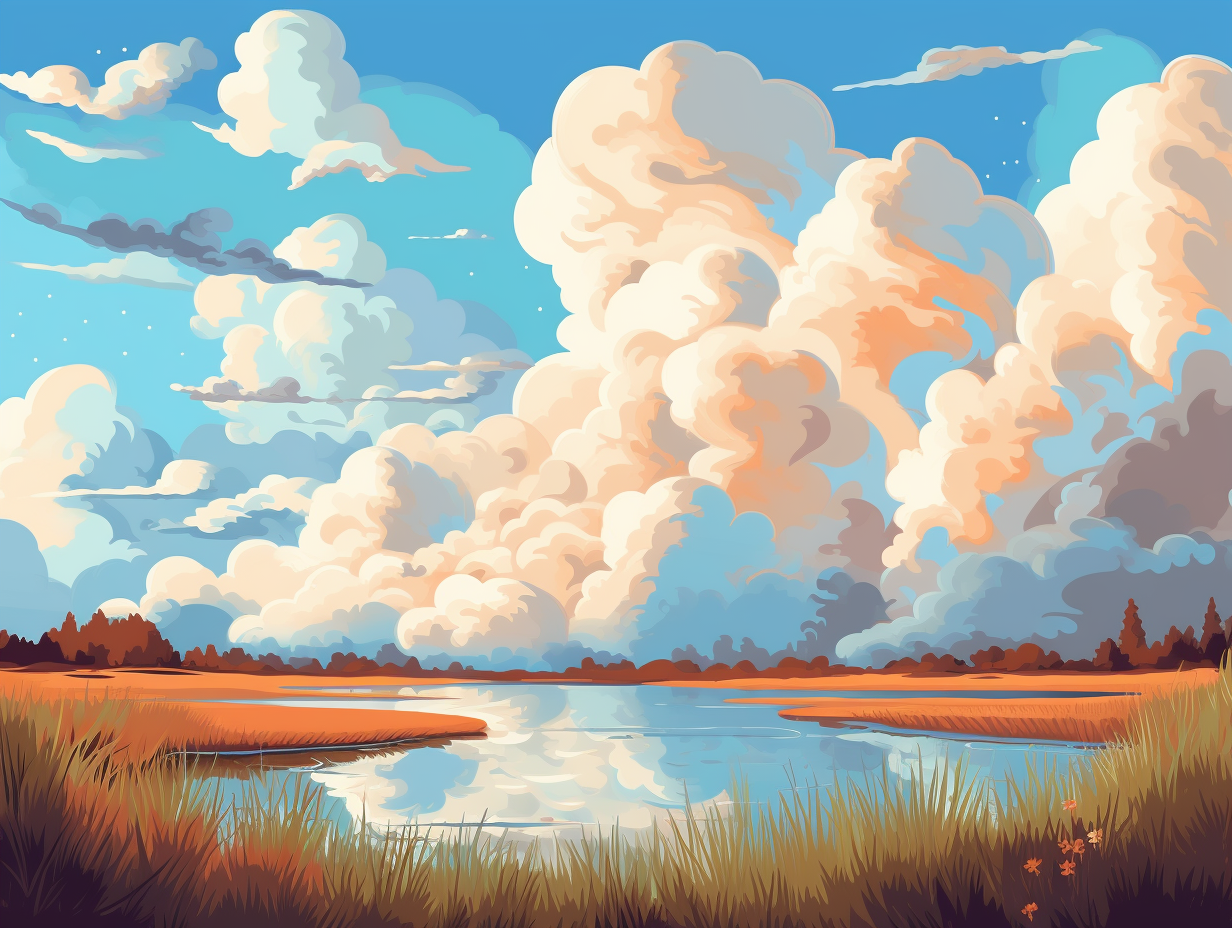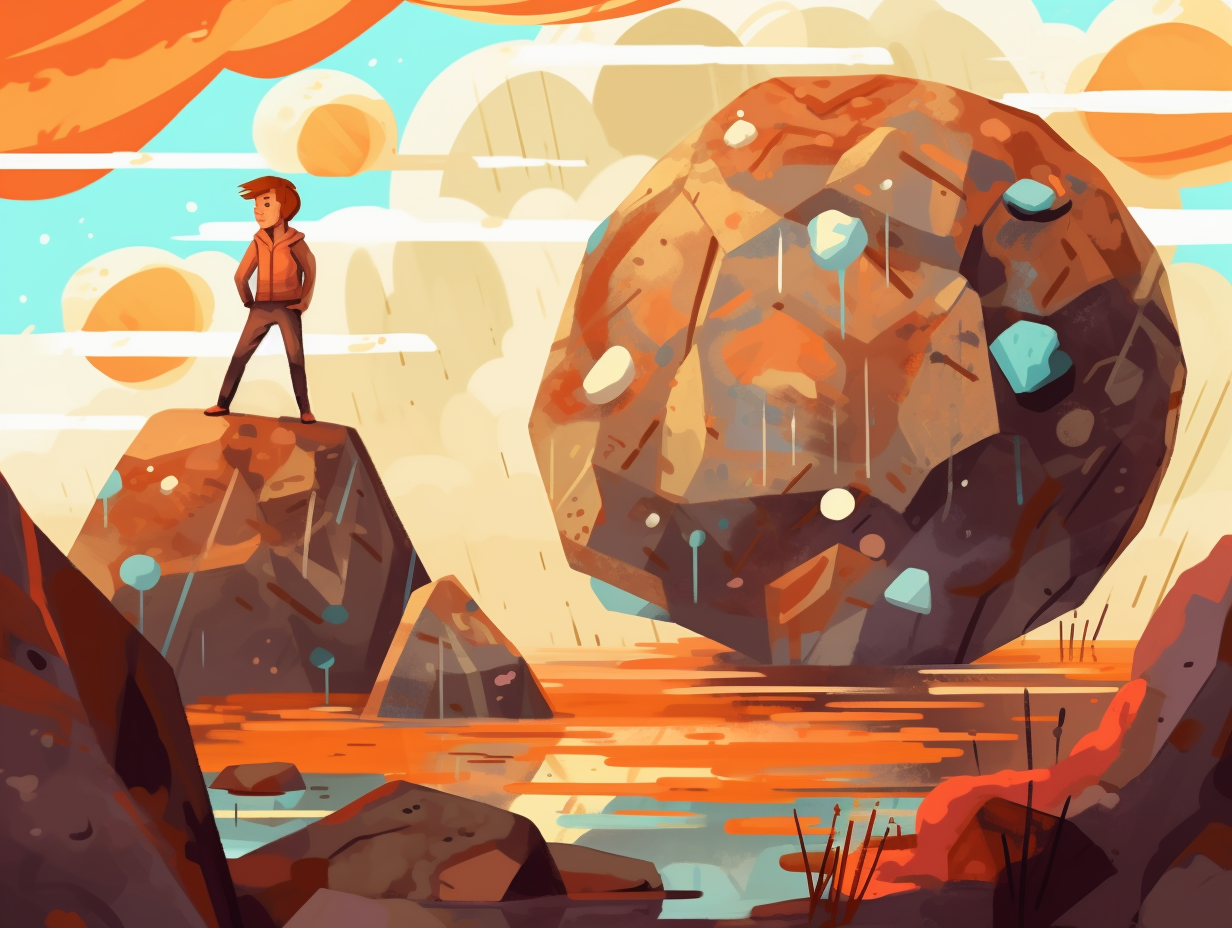Sky High Entertainment: Top 13 Incredible Fun Facts About Cirrus Clouds

1. Celestial Hairstylists
Whoever said variety is the spice of life must have been talking about cirrus clouds - you know, those wispy, cotton candy-like floaters that often look like they've been styled by a celestial hairdresser. Their portfolio of hairstyles is extensive and oh-so-stunning: Introducing cirrus castellanus, fibratus, floccus, spissatus, and uncinus as star models! These cloud divas each strut their unique strut, with some featuring puffy tops due to high-altitude convection, others looking strikingly striated, and some even resembling wild, contorted hairstyles thanks to wind shear, all while a select few even flaunt large, radial bands or ribs: Cirrus clouds come in multiple species and varieties, each having their own distinct appearance and formation depending on factors such as altitude, convection, and wind shear.
Source => en.wikipedia.org
2. Invisible Space Heaters
Cirrusly funny clouds: Did you know that cirrus clouds, despite looking like dainty feathers or tufts of cotton candy, act like invisible space heaters, warming up our planet by trapping infrared radiation? In fact, these sneaky little sky scribblers can increase the temperature beneath them by a toasty 10°C (18°F), making them quite the connoisseurs of the greenhouse effect.
Source => en.wikipedia.org

Did you know that fluffy cumulus clouds can transform into electrifying cumulonimbus ones and create lightning? Find out how they become the life of the sky party under different aerosol conditions!
=> Fun Facts about Cumulus-Clouds
3. Marvelous Mares' Tails
If you've ever looked skyward and thought, "My, what beautiful mares' tails!", it's likely you weren't gazing at an equestrian aerial show, but rather the whimsical wisps of cirrus clouds! Seriously, now: These clouds form when water vapor turns into ice crystals on minuscule particles called "condensation nuclei," and they typically grace the heavens at altitudes between 16,000 and 45,000 feet (5,000 to 14,000 meters), making them the highest of common clouds.
Source => duluthnewstribune.com
4. Iron Rain on Exoplanets
As the Tin Man from the Wizard of Oz would say, "I could be tender, I could be gentle, and awful sentimental, if I only had an exoplanet of iron rain": WASP-76 b boasts an exotic climate where wind carries iron atoms around the planet, causing them to condense into liquid droplets and create showers of iron due to the varying temperatures in its atmosphere. This range of chemical compositions makes exoplanetary clouds an intriguing field of exploration for stargazers near and far.
Source => eos.org

5. Kaleidoscopic Sky Magic
Fire rainbows and rainbow clouds: two scrumptious-sounding phenomena one might think were concocted by a celestial baker. But besides filling you with a craving for cotton candy, they also showcase an awe-inspiring optical trickery: circumhorizontal arcs. These kaleidoscopic displays are exclusive to the skies in latitudes between 50 degrees North and 50 degrees South. Formed when sunlight plays hide-and-seek through thin cirrus clouds with uniform water droplets or ice crystals, the lost light emerges, perfectly choreographed, as colors ordered like a celestial troupe of rainbows—all aligned below the sun and parallel to the horizon.
Source => geographyrealm.com
6. Sky Whiskers: Natural and Jet-Powered
Lo and behold, the celestial sky whiskers: cometh from nature's breath, not flighty humans on their jet-powered steeds! Cirrus clouds, those wispy atmospheric wonders, are created by natural air movements, yet can be enhanced by contrails from airplanes, trapping more heat in the process than all the CO2 emissions in aviation history.
Source => science.org
7. Climate Change Meddlers
You know what they say, "Cirrus clouds: you can't live with them, and you can't live on top of them!" But these thin, wispy showstoppers sure know how to influence the weather – good or bad: Cirrus clouds, when thinner, are less effective at blocking solar energy, potentially accelerating climate change by creating a positive feedback loop that amplifies warming effects. So, while they may make our sunsets more insta-worthy, they're also low-key meddling with our planet's thermostat!
Source => earth.com
8. Cirrus Cloud Navigation
Next time you're lost at sea, don't forget to look to the cirrus for guidance: these wispy, wayward clouds – particularly cirrus uncinus or fall streaks – are actually savvy sky sailors that can clue you in on the wind's direction aloft, essential for predicting the movement of surface weather systems and for emergency navigation purposes.
Source => davidburchnavigation.blogspot.com
9. Ethereal Horse Tales
Horse enthusiasts, listen up: there's a type of cloud that even Secretariat would be proud of, known as "mare's tails"! These whimsical wisps make up the cloud type that we call Cirrus: ice-crystal-embedded strands often seen foreshadowing pleasant weather or taunting us with an approaching storm. Not only do these lofty, equine-themed formations have a hand in weather predictions, but they also serve as an icy playground for contrails from airplanes, adding to their enchantment and climate impact. So the next time you see these ethereal horse tails dancing across the sky, remember there's more to the tale than meets the eye!
Source => nature.com

10. Unstreamable Sky Shows
Cirrus clouds: nature's underrated artists, putting on dazzling sky shows you can't stream on Netflix! These wispy wonders can bring their version of sun dogs and cloud iridescence to your day: ice crystals in high-altitude cirrus clouds refract sunlight, creating awe-inspiring halos and arcs better than any TV series drama.
Source => whatsthiscloud.com
11. Frosty Fair-Weather Forecasters
Feather your nest with this frosty fact: Cirrus clouds are made up of ice crystals, reaching altitudes of 20,000 feet, and not only do they foreshadow fair weather but can also put on a ravishing light show with stunning sunsets and sundogs.
Source => en.wikipedia.org
12. Rainbow-Making Cirrus Unicorns
If you thought unicorns were the only ones capable of creating rainbows, Cirrus clouds beg to differ: they can create a rare and stunning spectacle known as a "fire rainbow" or circumhorizontal arc, which occurs when sunlight passes through the cloud's ice crystals at a specific angle, producing an exquisite array of colors in the sky. Sadly, these mystical displays are incredibly scarce and can only be witnessed in certain regions during particular times of the year.
Source => en.wikipedia.org
13. Sky's Icy Artisan Van Goghs
Ready for some ice, ice, baby in the sky? Cirrus clouds are like nature's Van Gogh, painting the heavens with a palette of frozen crystals and making the sky swoon with breathtaking optical masterpieces: These high-altitude artisans create stunning halos, adorable sun dogs, and the rare, jaw-dropping glories, all by allowing sunlight to mingle with their hexagonal ice crystals in a cosmic dance of colors and patterns. So don't forget to wear your sunglasses at this celestial soirée!
Source => en.wikipedia.org
Related Fun Facts




















